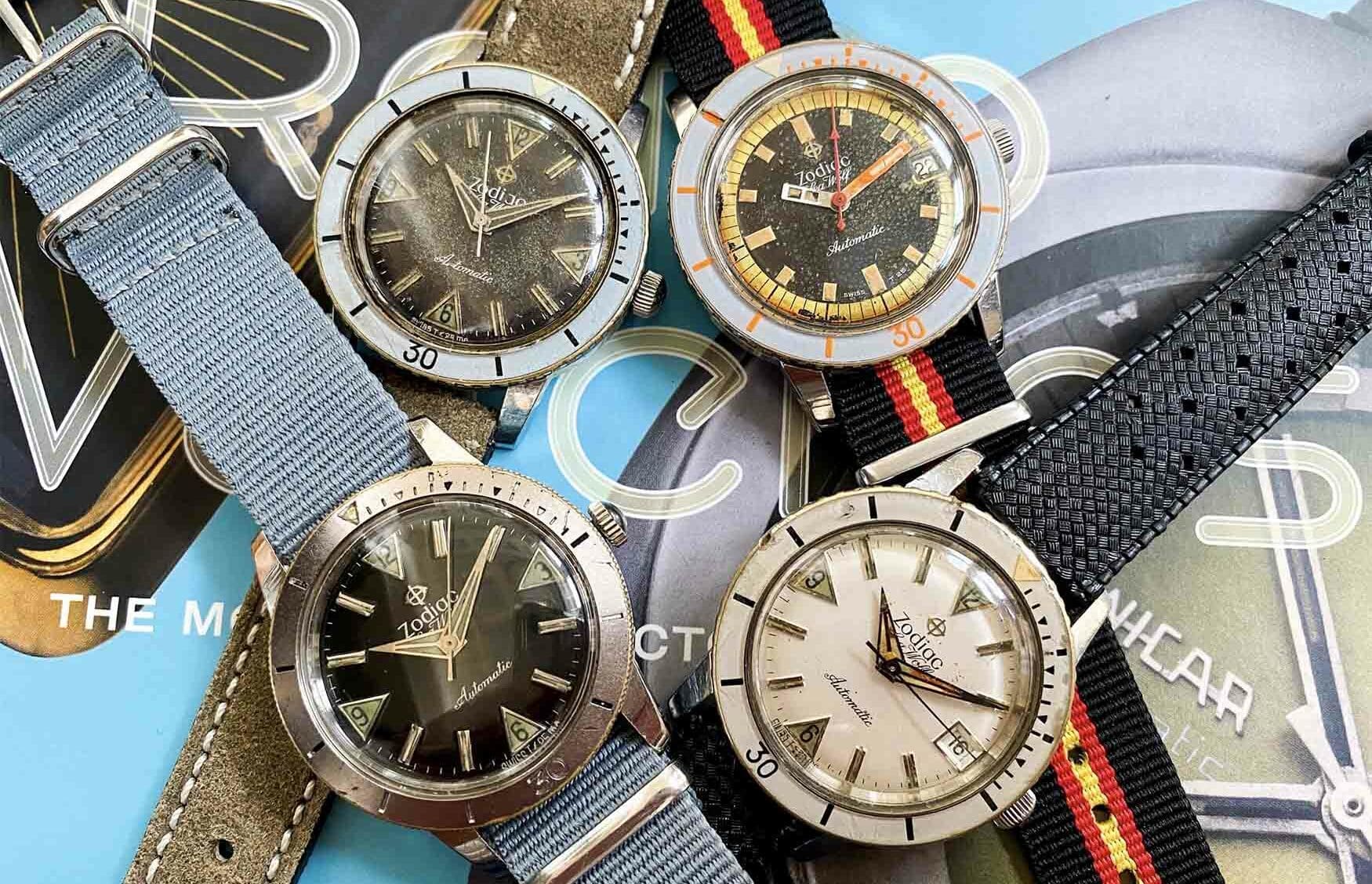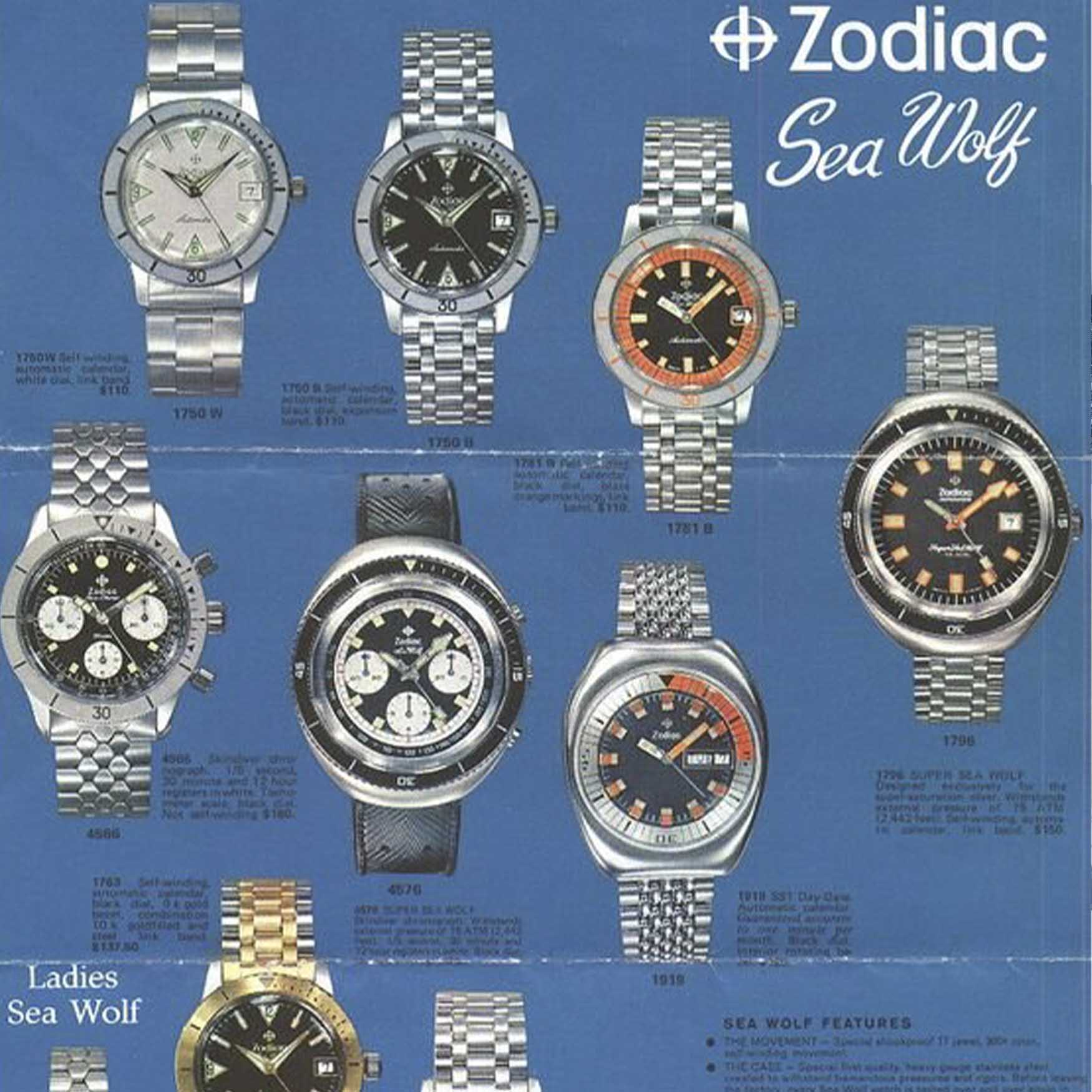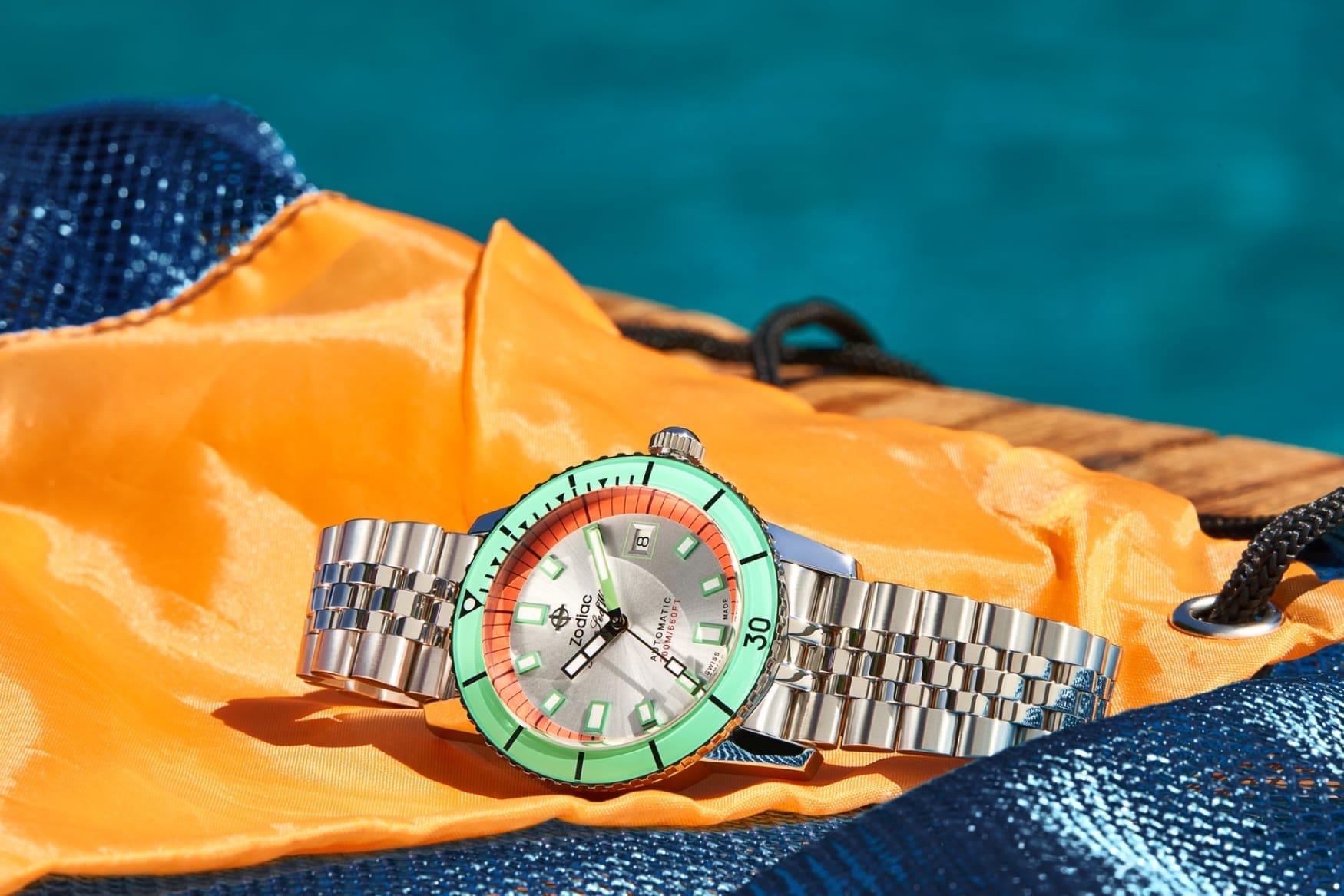How Zodiac started the funky colour trend
Fergus NashThe deeper history of dive watches will always be murky, especially on the topic of first-time achievements when simultaneous development had countless brands competing. When it comes to trend-setting however, there are some pretty obvious titans which spread their influence. The Blancpain Fifty Fathoms and Rolex Submariner were both released in 1953, cementing a significant legacy that still impresses 70 years later. Another dive watch released that same year was the original Zodiac Sea Wolf, introducing individual minute markers for the first quarter of the timing bezel and creating a style which Zodiac still stick to. The Zodiac Sea Wolf was loved as an affordable option for many years, but it wasn’t until the early ‘60s that it began to change the face of watch design.
Thinking of colourful dive watches, the mind turns to the likes of the Doxa Sub 300, but they didn’t come around until 1967. Early examples can be found such as the Mido Powerwind with its rainbow decompression timer from 1959, but those colours were based on scientific principle and genuine utility. The Zodiac Sea Wolf had originally been marketed as a no-nonsense tool, however the added appeal of creative colours saw their catalogues begin to evolve. The Zodiac Sea Wolf Datomatic of 1964 introduced a quick-set date display and Bakelite bezels, with some of the earliest colourful references including pale blue inserts for a summery effect, and that was given even more zing when paired with the tangerine-ringed black or silver dials. They acknowledged that a dive watch could be both professional and playful at the same time, and broke up the monotony of endless black.

By the end of the 1960s and the dawn of the ‘70s, colourful divers were everywhere. Although they may not have had the near-exhausting variety of today’s reissues and microbrands, all sorts from legendary brands to department store assemblies were selling watches which promised bright colours with or without genuine diving capability. That same attitude which the Zodiac Sea Wolf introduced had even permeated non-divers, such as the Rolex ‘Stella dial’ Day-Date that ranged from saturated lacquer to precious stones.

Zodiac went through a tumultuous period in the ‘80s and ‘90s to say the least, as the Quartz Crisis did them no favours despite releasing the first chronometer-certified digital watch in 1977 and the thinnest quartz watch in 1978. A buyout from an ex-TAG Heuer executive in 1990 muddied their catalogue with lazy TAG clones, and they fizzled into bankruptcy by 1997. The brand and assets changed hands twice more and landed with the gargantuan Fossil Group, allowing Zodiac to keep their Swiss manufacturing while the headquarters moved to Texas, USA. It wasn’t until 2015 that the Sea Wolf returned to the fold, and now the modern Zodiac is full of both classic and innovative colourful references that honour the spirit of the original. In addition to faithful recreations of those Bakelite colour schemes, watches like the Zodiac Super Sea Wolf Skeleton slather the bezel in a delicious palette which evokes rainbow ice cream.




